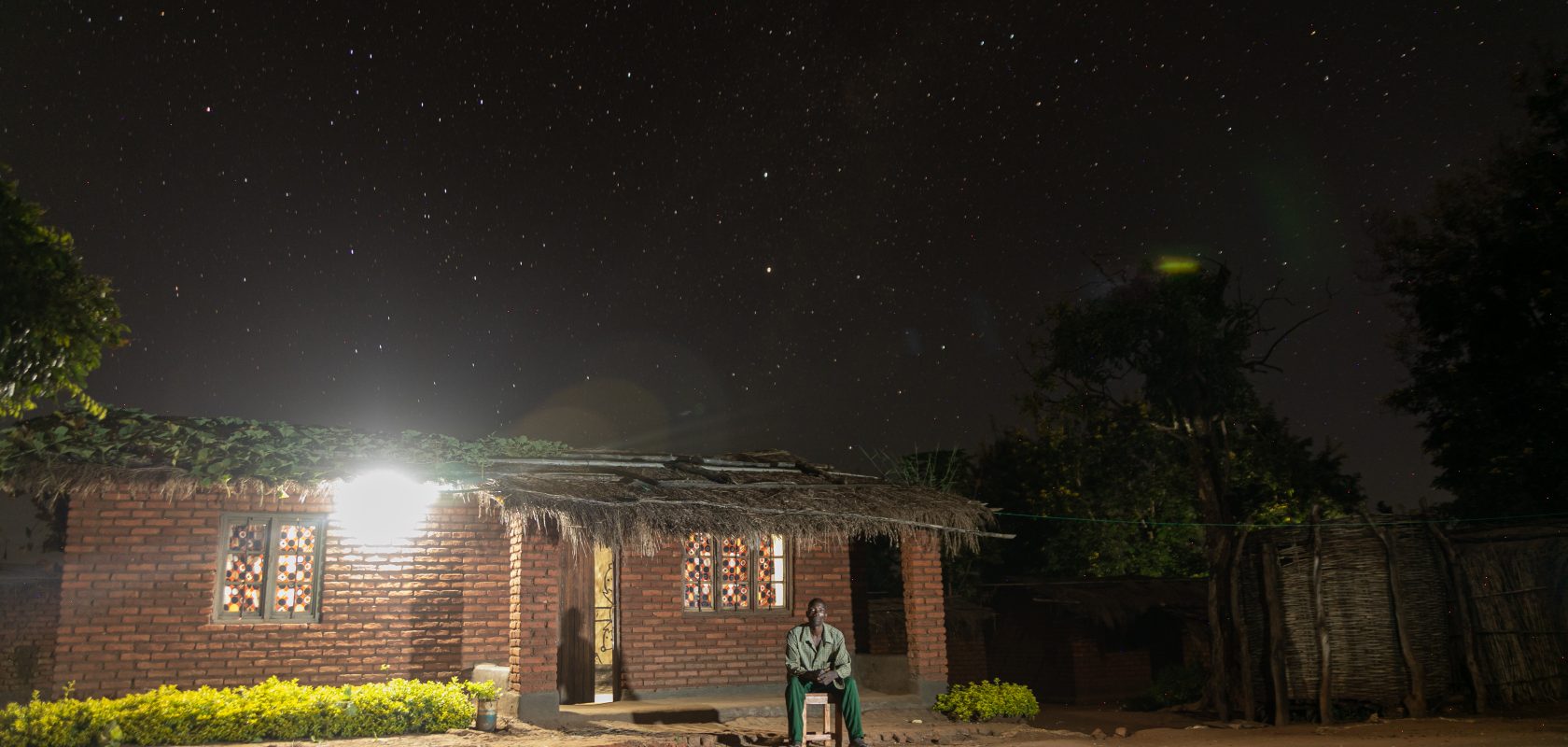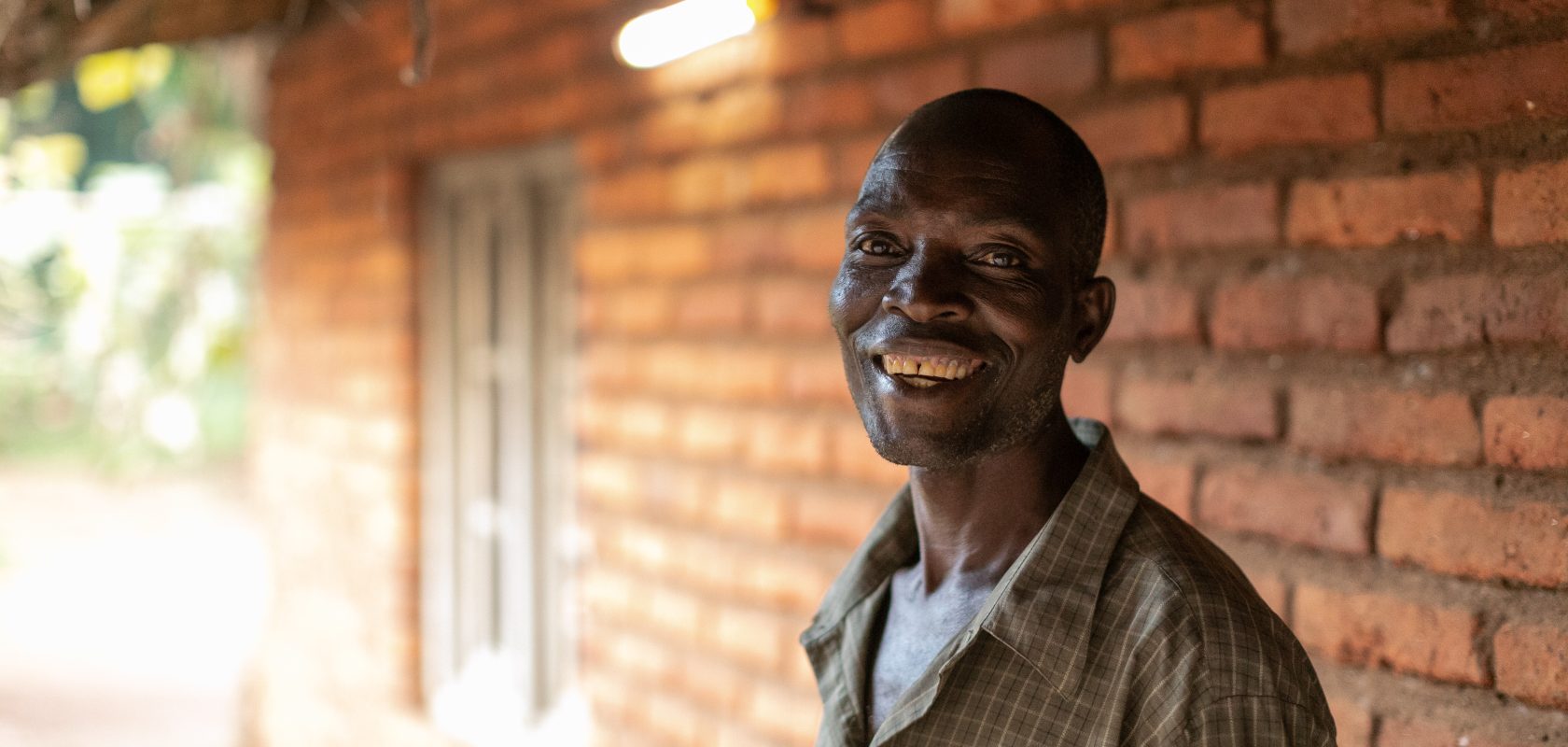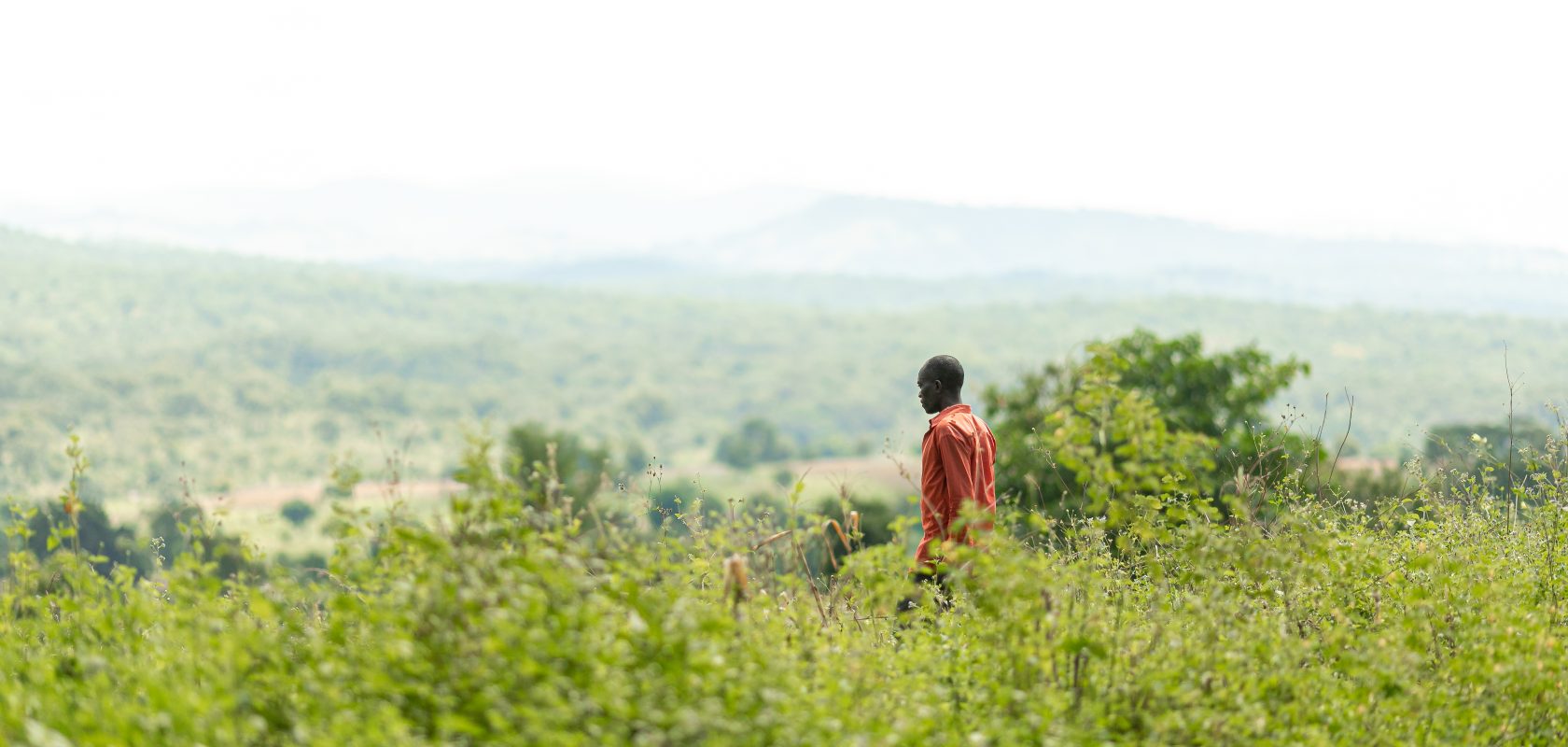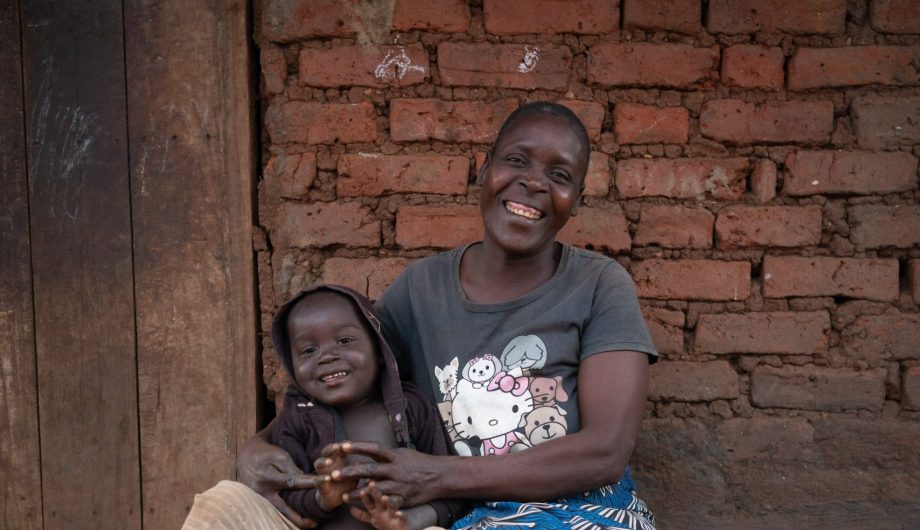Kenedy recalls the first night he flicked the switch and filled his home with light, “It was like magic. We were all so happy and excited to finally have light in our home. It was a beautiful moment for all of us. I felt so happy and proud to have this opportunity at last.”
Previously, the Buleya household used lighting sources such as straw fire or paraffin, but paraffin became scarce and straw fire was impossible to use during the rainy season. When he could afford it, he would drop off his mobile phone at the charging station, but it was expensive and his phone battery only lasted so long with the torch on.

Kennedy starting some fire to light up and illuminate in his house using thatch from his house. Chris Gagnon/SolarAid.
From safety to education and the wellbeing of his family, there were many struggles in the Buleya household in the past such as having to borrow a kerosene lamp for his wife just to give birth with more light than just straw fire. Kenedy told us, “When it is dark here, I am in big danger because at night there are a lot of things moving around. We fear because it is dark. Maybe we may meet fierce animals such as snakes and hyenas too. We feel terrified.”
Alongside the safety of his family, Kenedy also worried about his children’s education. When he was a child he had to drop out of school, and seeing his children facing the same destiny pained him, “Inside my heart I feel so disappointed, because a child needs to study. However, because of poverty, that is why the children struggle in their heart, even myself I struggle inside, to say that how can I find light so that the children can perform well in school?” he asked us.
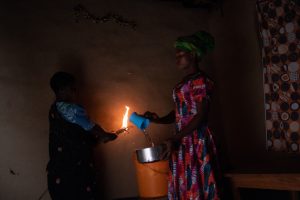
Kenedy’s daughter doing chores by the light of grass fire. Chris Gagnon/SolarAid.
Today, he worries less, “I think it will still be a worry, but not as much as before. With light in our home, we will be able to see what’s going on outside and around us. This will help us be more aware of any potential dangers, like wild cats or hyenas.”

